In the rapidly evolving Web3 landscape, wallet miniapps are emerging as the default onboarding channel for new users. These lightweight applications, embedded within familiar platforms (like messaging apps or crypto wallets), are revolutionizing how people enter the world of blockchain.
By meeting users where they already are and offering a seamless, wallet-native UX, Web3 projects can dramatically lower barriers to entry and accelerate growth. In fact, what used to take numerous confusing steps across separate apps can now happen in one place – making user onboarding simpler than ever.
Traditional Web3 onboarding has been notoriously clunky. A typical user might have to click an ad, sign up on a dApp website, install a browser extension wallet, switch between apps, and grasp complex interfaces, all before they can actually use a blockchain service. It’s no surprise most newcomers give up. Studies show only around 20% of users manage to perform an on-chain action after first discovering a Web3 app, due to this fragmented funnel. Wallet miniapps change the game by collapsing the entire journey: discovery, signup, wallet setup, and usage – into a single, cohesive experience.
What Exactly Are Wallet MiniApps in Web3?
In simple terms, Web3 wallet miniapps are lightweight web applications that run inside larger apps or wallets, providing Web3 functionality in a familiar environment. A prime example is Telegram MiniApps, which allow crypto projects to deploy mini-applications inside the Telegram messaging app. Instead of forcing users onto standalone websites or separate crypto wallets, a project can reach users directly on a platform they already use daily. This is reminiscent of WeChat’s famous “mini programs” – and in fact, Telegram launched its MiniApp platform in 2023 through a partnership with The Open Network (TON) blockchain and Tencent (WeChat’s parent company).
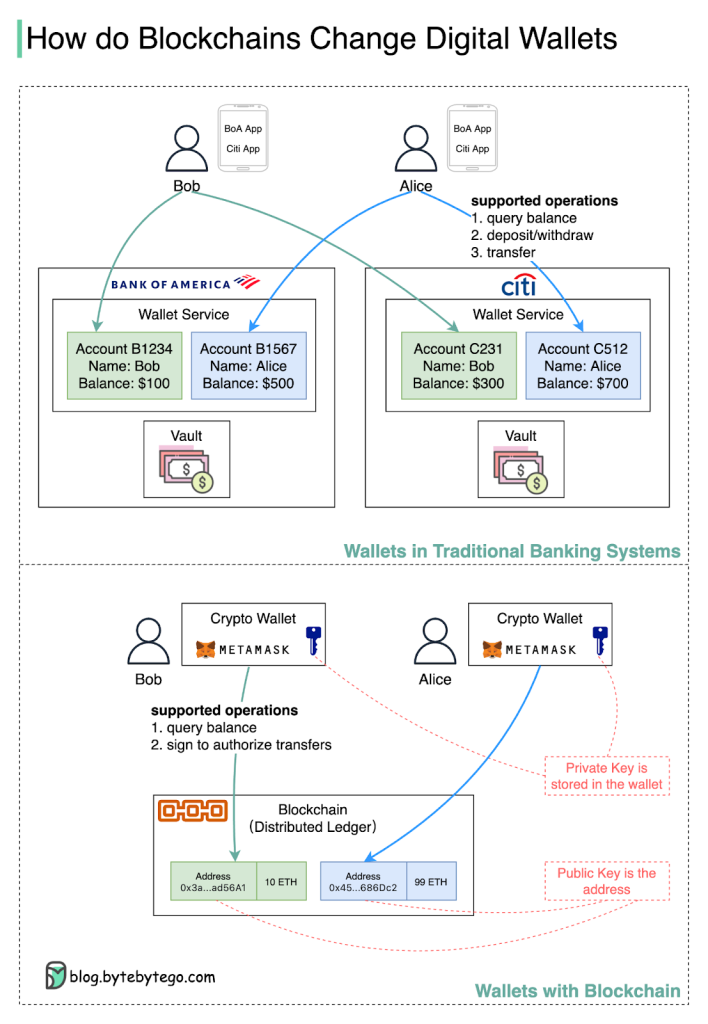
Diagram comparing digital wallet behaviour in traditional banking vs. blockchain wallets, illustrating how wallet-services manage accounts, transactions, and vaults differently in Web3 (Source: ByteByteGo)
Key characteristics of Web3 miniapps include:
- No Separate Installation: Users do not need to install another app or browser extension. The miniapp loads on demand within the host app with a single tap. For instance, Telegram miniapps are accessed via chat bots or links and work instantly across mobile or desktop, just like opening a chat window.
- Wallet-Native Integration: A wallet miniapp comes with a built-in crypto wallet or connects to the host app’s wallet. In Telegram’s case, TON blockchain wallets are embedded, so users can seamlessly sign blockchain transactions or manage tokens right inside the miniapp. This wallet-native UX means users aren’t juggling external wallet apps or copying addresses – the blockchain interactions feel as easy as sending a message.
- Web2 Convenience Meets Web3 Power: Miniapps are built with standard web technologies (HTML/JS) but can invoke blockchain features (smart contracts, token transfers, NFTs) under the hood. The user experience is Web2-level simple, while the backend delivers Web3 functionality like secure payments, digital asset ownership, and more. This blend provides a gentle introduction for users who might not be crypto-savvy.
- Cross-Platform & Scalable: Because they run inside established platforms, miniapps automatically inherit compatibility with all devices that platform supports – Android, iOS, desktop, etc. Moreover, high-performance blockchains such as TON ensure that transactions in these miniapps are fast and low-cost, preventing the slow speeds or high fees that plague some Ethereum dApps. In short, the tech can scale to millions of users without breaking the experience.
By hosting decentralized apps within well-known “container” apps, wallet miniapps bridge the gap between Web2 and Web3. Users get to try out blockchain-based services in a comfortable setting no more switching between multiple apps or wrestling with unfamiliar crypto-specific software. This convenience is a game-changer for user onboarding, as it removes the intimidation factor and technical hurdles that have kept many people away from Web3 until now.
Why Wallet MiniApps Are the New Default for Web3 Onboarding
Web3 projects are increasingly treating wallet miniapps as their go-to strategy for bringing in users. Why are these miniapps so effective at onboarding and retaining users? Below are the key advantages of wallet miniapps (with a focus on Telegram’s miniapp ecosystem as a real-world example):
- Massive Built-in User Base & Reach: Platforms like Telegram come with hundreds of millions of active users ready to tap into. By launching a miniapp on Telegram, a Web3 project can instantly access Telegram’s ~800 million monthly users without asking them to download anything new. For any startup or dApp, this built-in audience is invaluable – your Web3 service is now just a click away for nearly a billion people. This vastly outshines the reach of typical standalone dApps, which often struggle to attract users onto a separate site or app. In short, wallet miniapps allow Web3 projects to ride on the distribution power of existing platforms from day one. (Telegram’s deep integration with TON even ensures those users have wallets ready to go)
- Seamless, One-Tap Onboarding (Frictionless UX): Wallet miniapps slash the multi-step onboarding process down to essentially one tap. There’s no need to install a new application, no browser extension, and no tedious account creation – the host platform’s single sign-on handles it. For example, a Telegram miniapp can use Telegram Login for instant user authentication and then immediately present the user with a functional interface. Everything happens inside a familiar chat window. This convenience aligns with modern user expectations: people can start using a Web3 service as casually as opening a chat message. By eliminating extra steps, miniapps drastically reduce drop-off rates. Users don’t feel like they are doing anything special or “crypto,” which lowers the psychological barrier for non-technical newcomers. They can learn by doing, in an environment they already know.
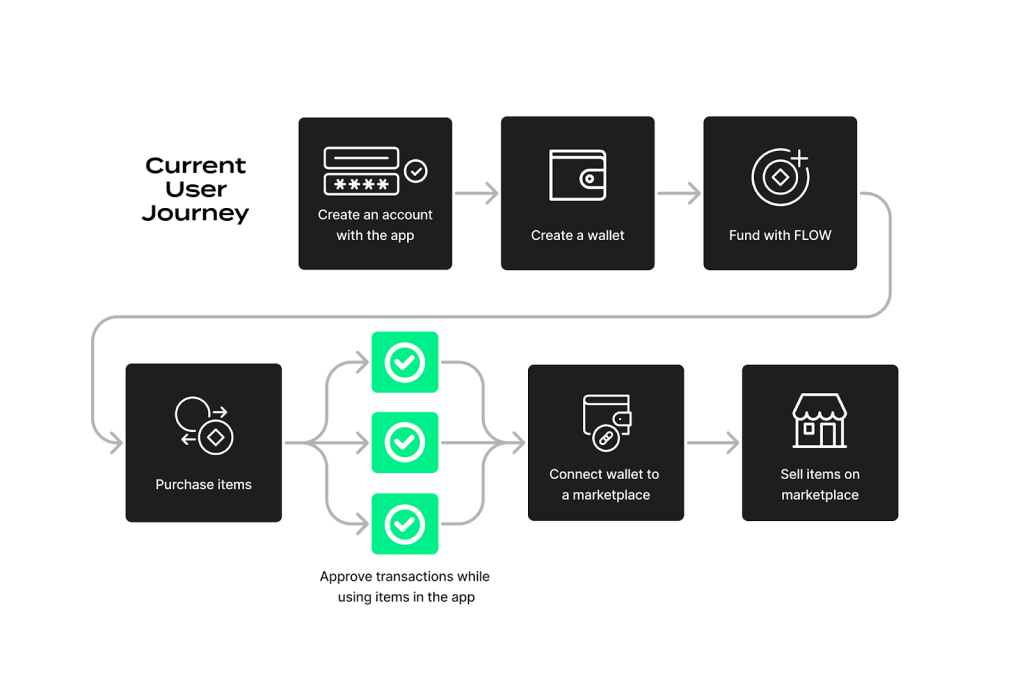
Flow diagram depicting walletless or hybrid-wallet onboarding: account creation → wallet setup/embedded wallet → fund wallet or connect existing one → perform first action (Source: Flow.com)
- Wallet-Native UX with Integrated Crypto Wallet: A standout feature of these miniapps is the wallet-native user experience. That means the wallet for holding and transacting crypto assets – is built right into the flow of the miniapp. In late 2023, Telegram even introduced a TON crypto wallet directly within its app. So when a user engages with a Web3 miniapp on Telegram, they automatically have a functional crypto wallet at their fingertips to send tokens, buy NFTs, or sign transactions without ever leaving the app. No confusing wallet setup or seed phrases required upfront. This native integration makes actions like payments or token swaps feel as easy as sending an emoji in chat. By blending Web2 ease-of-use with Web3 capabilities in one place, miniapps remove the need for users to understand the complexity of crypto wallets – a huge win for onboarding.
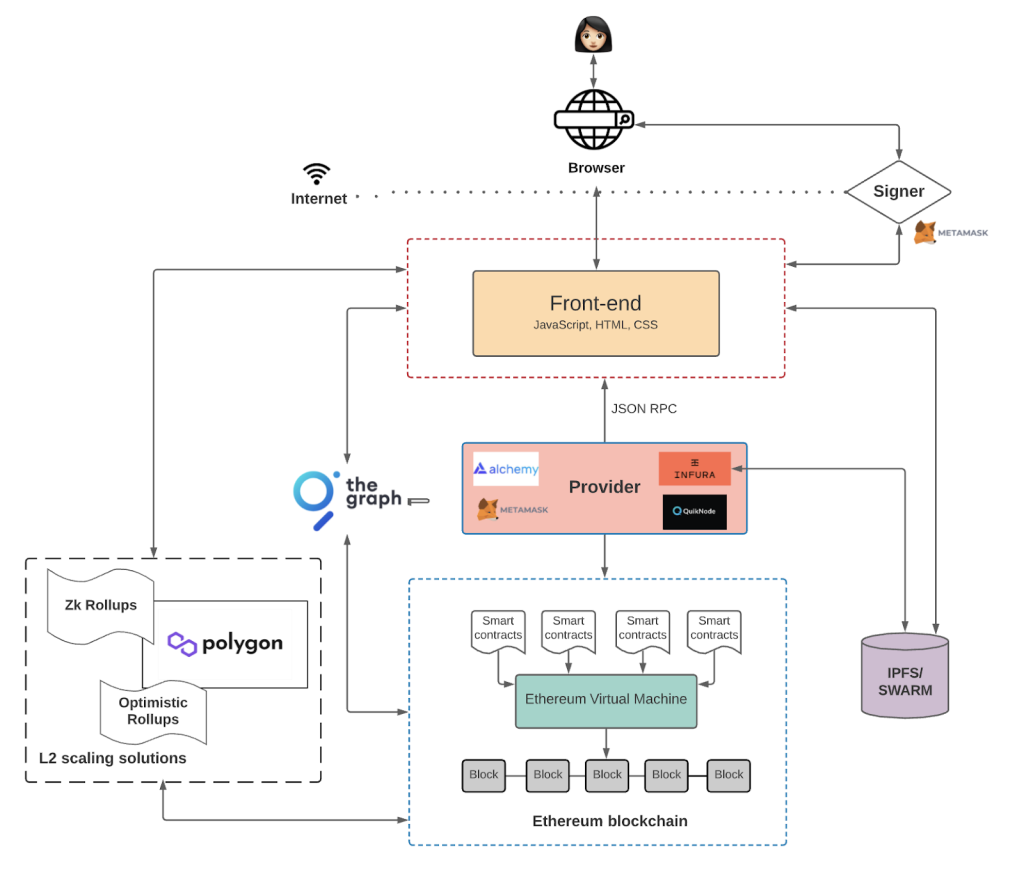
Diagram showing Web3 front-end interacting with wallet provider, blockchain nodes, and metadata services – illustrating embedded wallet-native interactions (Source: thenewstack)
- Integrated Payments & Monetization: Because of the deep integration, miniapps can leverage both fiat and crypto payment rails seamlessly. For instance, Telegram miniapps can use built-in payment methods like Apple Pay/Google Pay or the TON blockchain’s Toncoin for crypto transactions. A user could jump into a miniapp, and with a couple of clicks, purchase an item or tip a creator using their choice of currency – all without leaving the miniapp. This lowers friction for in-app purchases and microtransactions, opening the door for more monetization opportunities. Early-stage Web3 projects can thus test revenue models (e.g. token sales, NFT marketplace, subscription) more easily when users don’t have to jump through hoops to pay. By making transactions “as easy as sending a message,” wallet miniapps encourage users to actually engage in the economic side of Web3, not just browse.
- High Engagement through Social & Gamification: A big part of onboarding is not just getting a first-time user, but keeping them around. Miniapps embedded in social or wallet platforms benefit from the surrounding community and interactive features. In Telegram, for example, miniapps live alongside group chats, channels, and bot interactions – meaning a user can discover a miniapp via a community, share it with friends, and receive real-time updates or notifications. This all-in-one environment keeps users engaged far longer than a standalone dApp might. Many miniapps also incorporate gamified elements (like points, badges, leaderboards) that tap into the host platform’s social graph. Telegram even allows miniapps to display badges on user profiles to reward on-chain actions. By making Web3 usage feel like a natural part of social interactions and gaming, miniapps significantly boost retention and user participation. The result is a self-reinforcing growth loop: users join via social channels, get rewarded and recognized for participation, and invite more users.
- Performance and Scalability at Scale: Successful onboarding means being able to handle mass adoption when it hits. Wallet miniapps, especially those on TON via Telegram, are built on infrastructure that can scale to millions of users in real-time. TON’s high throughput and low fees allow miniapp actions (like token transfers or NFT mints) to execute almost instantly and at negligible cost. This ensures that even if a miniapp suddenly onboards tens of thousands of users in a day (not unheard of, as we’ll see), the user experience remains smooth – no network congestion or $50 gas fees to scare people away. In effect, the performance of well-designed miniapps can rival traditional Web2 apps, removing one of the last technical hurdles that previously impeded Web3 user experience.
- Trust and Security of Established Platforms: Users new to Web3 are understandably cautious about sketchy websites or random apps asking for wallet access. Here, wallet miniapps have an edge because they inherit the trust of their host platform. For example, interacting with a dApp inside Telegram benefits from Telegram’s reputation for privacy and its enforced security standards. Users feel safer trying a blockchain feature within a known app (Telegram, with end-to-end encryption and active moderation) versus clicking an unknown external link. This implicit trust can increase willingness to try the miniapp, further smoothing onboarding. Additionally, platforms like Telegram work to ensure compliance and safety (such as preventing malicious miniapps), which helps enterprises feel more confident in deploying their Web3 services there.
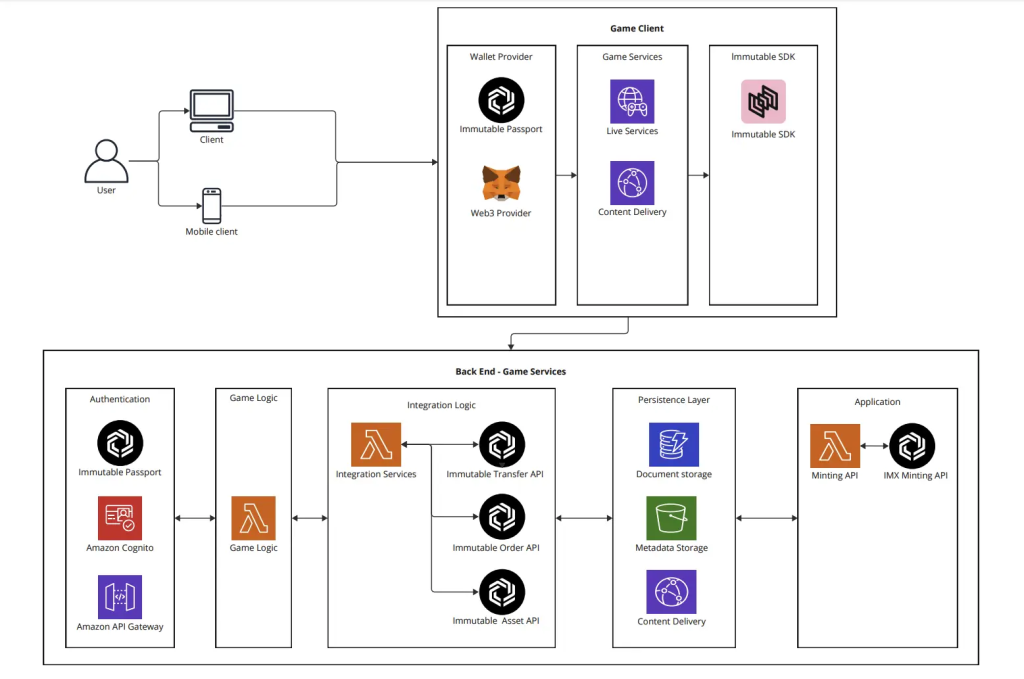
MiniApp/game-based architecture for Web3: showing client, wallet provider, game logic, and off-chain services (Source: immutable)
All these advantages explain why wallet miniapps aren’t just a minor improvement, they are redefining what “good onboarding” means in Web3. By delivering instant, convenient, and integrated user experiences, miniapps address the very issues that held back Web3 growth for years. It’s a transformation where the moment of user interest (say, seeing a cool Web3 game mentioned in a chat) can seamlessly become the moment of user activation (trying and using that game immediately). No more losing users between discovery and action; with miniapps, discovery is action.
Strategic Takeaway for Businesses and Builders
For technology leaders, whether you’re running a Web3 startup, a growing dApp, or even a traditional enterprise eyeing blockchain – the rise of wallet miniapps presents a clear message: user experience is the new growth engine. If you want to boost user onboarding and Web3 growth for your project, meeting users in the environments they already frequent (like Telegram or popular wallet apps) can remove the biggest barriers to adoption. Instead of expecting users to come to you (and lose many along the way), you bring your app to them.
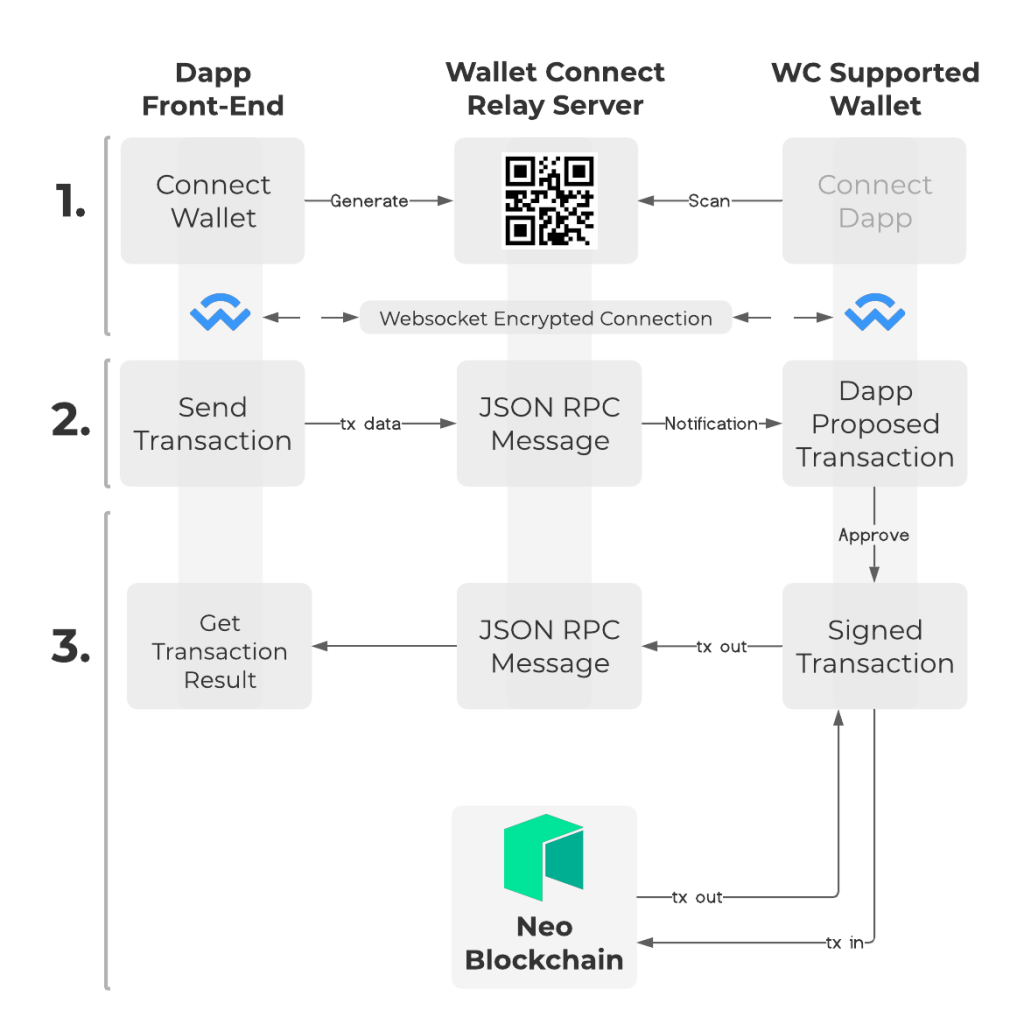
Wallet-connect architecture flow: frontend “miniapp” connects to wallet via relay server, transaction requests handled through RPC, and signed transactions return to miniapp (Source: Neo Blockchain)
Consider integrating your Web3 services as miniapps or similar embedded experiences:
- Leverage Wallet-Native Platforms: Identify platforms that your target users already use (e.g. Telegram for crypto communities, or possibly other emerging wallet super-apps) and see if they support embedded apps or bots. By launching on such platforms, you gain distribution and instant credibility. Users will be more willing to try your service when it’s one tap away in a trusted app, versus finding a new website.
- Streamline Onboarding Flows: Aim to minimize the steps required before a user can get value. Use single-sign-on or social logins, integrate a wallet solution that doesn’t demand manual setup, and simplify the UI. Remember, if your onboarding takes more than a minute, many users will drop. Wallet miniapps can often onboard in seconds because they piggyback on an existing logged-in session (like a Telegram account). Emulate that ease wherever possible.
- Focus on Familiar UX Patterns: Design your Web3 app to feel like the platforms your users know. If it’s inside a messaging app, rely on simple buttons, menus, and messages rather than complex Web3 jargon. The goal is to make blockchain interactions feel ordinary. As seen, when users earned crypto by completing tasks in a Telegram miniapp, many didn’t even realize they were “using Web3” – they were just using an app that happened to be powered by Web3. That’s the level of simplicity to strive for.
By incorporating these approaches, businesses can significantly improve conversion rates from awareness to action. Projects that once saw 80% of interested users give up before using the dApp can now keep most of those users through the critical first-use moment. And once users complete an on-chain action successfully (like winning a token reward or making a trade) in a miniapp, they are far more likely to continue exploring other Web3 features. Essentially, wallet miniapps turn the dreaded “first-day user drop-off” into an opportunity for quick wins that hook the user.
Conclusion
“Onboarding is the make-or-break factor for Web3 growth” and wallet miniapps have proven to greatly tilt the odds in favor of make, not break. By integrating decentralized services into familiar apps and wallets, they remove friction, build trust, and enable viral growth loops that were previously unattainable in the crypto space. In 2025 and beyond, we can expect this model to expand: more wallets and social platforms will likely introduce miniapp frameworks, and the concept of a “wallet-native” onboarding will become standard for successful Web3 products. The bottom line is clear: wallet miniapps are becoming the default onboarding channel for Web3 users, transforming messaging and wallet apps into entry points for the decentralized world.
Twendee Labs recognizes the immense potential of this shift. As a seasoned blockchain development company, we have been at the forefront of building wallet-native Web3 applications – including tailored Telegram miniapps that leverage TON’s capabilities. We provide end-to-end support to turn your decentralized idea into a user-friendly miniapp, handling everything from product design and smart contract integration to deployment and growth analytics. Our expertise in wallet miniapps Web3 development means you don’t have to navigate this new landscape alone. If you’re looking to fast-track user onboarding and tap into the power of wallet miniapps, our team can make it happen quickly and securely.
Get in touch with Twendee Labs to explore how we can help build the next breakthrough onboarding experience for your users. Together, let’s turn the promise of easier Web3 access into reality – and grow your project by bringing Web3 to everyone’s fingertips.
Connect with us on LinkedIn or X to explore how Twendee can support your transformation: Twitter & LinkedIn Page
Read latest blog: Top 5 Opportunities for Web3 Tokenization in Singapore’s Real Estate Sector





